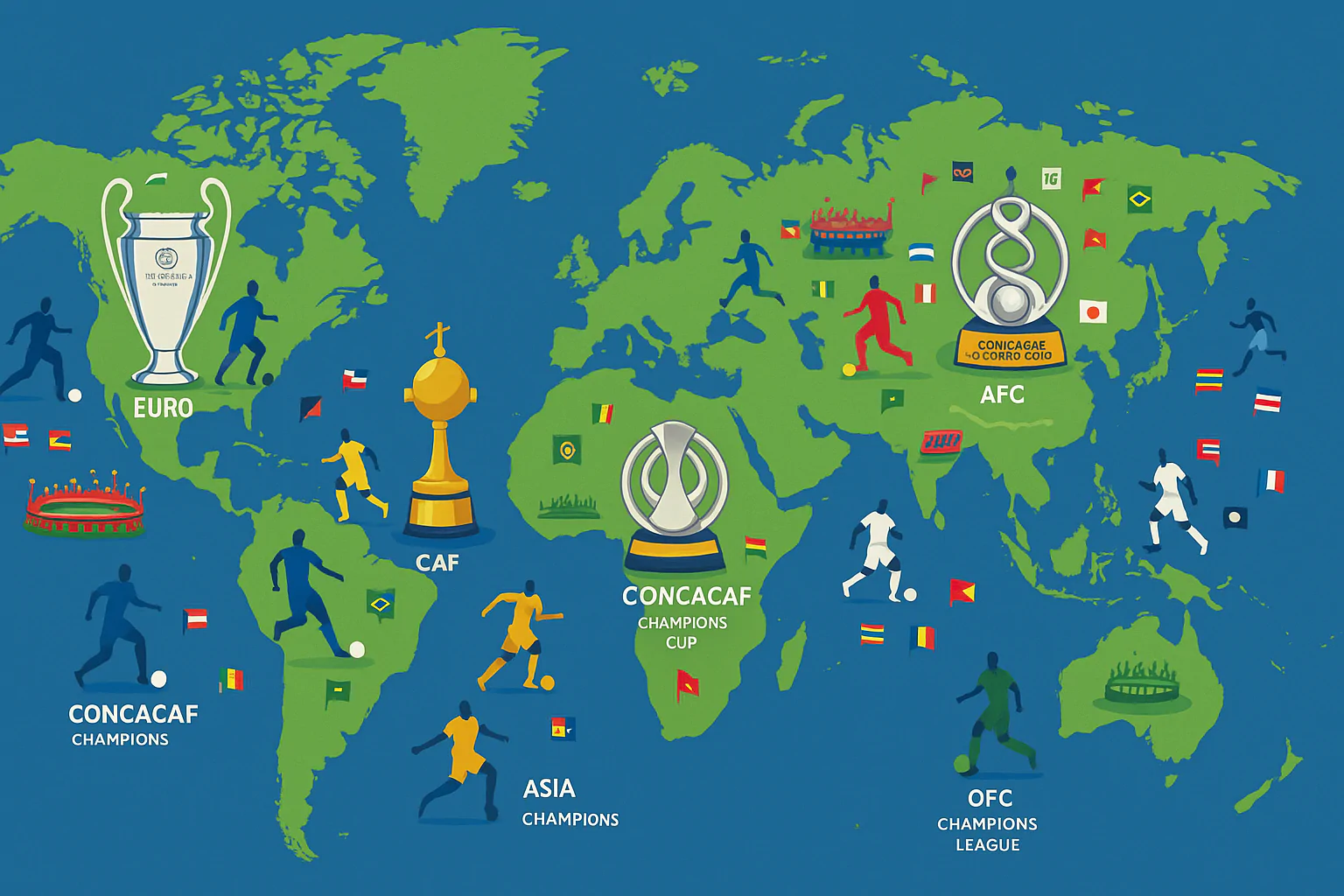How Top-Tier Tournaments Shape the World of Football Across Continents
Football transcends borders, languages, and cultures—serving as a universal language of passion, rivalry, and unity. At the heart of this global phenomenon lie the continental club competitions. These tournaments are more than just annual sports events; they are arenas where history, identity, and excellence converge.
This comprehensive article explores the world’s top continental club competitions, examining their historical significance, cultural impact, evolving formats, and how they influence the global football landscape.
UEFA Champions League: Europe’s Crown Jewel
The UEFA Champions League stands as the most prestigious club competition globally. It gathers the elite of European football, turning midweek nights into unforgettable spectacles.
Historical Context
- Founded: 1955 (as European Champion Clubs’ Cup)
- Modern Format Introduced: 1992
- Notable Winners: Real Madrid (14 titles), AC Milan, Bayern Munich, FC Barcelona
Global Impact
- The Champions League is broadcast in over 200 countries.
- Generates billions in advertising, sponsorship, and broadcasting revenue.
- Platform for top footballers to cement their legacy.
Cultural Significance
- “Champions League Nights” are a staple in European sports culture.
- Strong rivalries like Real Madrid vs. Bayern Munich elevate global viewership.
CONMEBOL Copa Libertadores: South America’s Fierce Heartbeat
The Copa Libertadores is synonymous with raw emotion, passionate fan bases, and historic rivalries. It represents the very soul of South American football.
Key Features
- Established: 1960
- Dominant Clubs: Boca Juniors, River Plate, Flamengo, Palmeiras
- Unique Characteristics: High-altitude games, intense fan culture, unpredictable outcomes
Cultural Power
- The atmosphere in Libertadores matches is electric, often including choreographed fan displays (barras bravas).
- Deep social and political ties within cities and regions.
CAF Champions League: Africa’s Gateway to Greatness
The CAF Champions League may not have the same financial weight as its European or South American counterparts, but its importance in African football development is immense.
Milestones
- Inaugurated: 1964 (as African Cup of Champions Clubs)
- Top Teams: Al Ahly (Egypt), TP Mazembe (DR Congo), Espérance (Tunisia)
- Prize Pool Growth: Increased dramatically in the last decade due to sponsorships
Social Role
- It provides exposure for African players to scouts from Europe and Asia.
- Highlights disparities in infrastructure and finance but also showcases resilience and talent.
AFC Champions League: Asia’s Rising Power
Asia’s football scene is rapidly evolving, and the AFC Champions League is at the center of this transformation. Investment, talent development, and fan engagement are accelerating across the region.
Fast Facts
- Founded: 1967 (as Asian Club Championship)
- Dominant Clubs: Al Hilal (Saudi Arabia), Urawa Red Diamonds (Japan), Jeonbuk Hyundai (South Korea)
- Format Update: Rebranded and expanded in 2002
Strategic Value
- Countries like Saudi Arabia and Qatar are investing heavily in club football.
- Platform for strategic growth before hosting global events like the FIFA World Cup.
CONCACAF Champions Cup: A Region in Ascent
North and Central America’s top-tier club competition has undergone a recent rebranding and is growing in visibility, particularly due to the rise of Major League Soccer (MLS).
Key Developments
- Rebranded: 2024 (from CONCACAF Champions League to CONCACAF Champions Cup)
- Main Contenders: Club América (Mexico), LAFC (USA), CF Monterrey (Mexico)
- Format: Knockout tournament with expanded teams
Growing Rivalries
- USA vs. Mexico club clashes are becoming must-watch events.
- Focus on commercial appeal and cross-border fan engagement.
OFC Champions League: Oceania’s Quiet Climb
Though less publicized, the OFC Champions League plays a critical role in football development across Pacific nations.
Overview
- Founded: 2007 (current format)
- Key Clubs: Auckland City FC (New Zealand), Hekari United (Papua New Guinea)
- Challenges: Geographic distance, limited infrastructure, and lower budgets
Developmental Role
- Acts as a qualifier for the FIFA Club World Cup.
- Helps smaller footballing nations gain competitive experience.
The FIFA Club World Cup: A Global Stage for Continental Glory
Each continental champion earns the right to compete in the FIFA Club World Cup—a tournament that brings together the best from every confederation.
Looking Ahead
- Expanded to 32 teams starting in 2025
- Hosted every four years
- Designed to rival the prestige of the UEFA Champions League globally
Beyond the Pitch: Why Continental Competitions Matter
These tournaments offer more than just trophies. Their impacts are widespread:
Economic Development
- Increased revenue for clubs through sponsorships and broadcasting.
- Job creation and infrastructure upgrades in local economies.
Cultural Identity
- Clubs represent regions and ideologies.
- Games often carry socio-political symbolism.
Talent Development
- Young players gain international exposure.
- Scouting opportunities open doors to Europe and beyond.
What the Future Holds
As football becomes more globalized, continental competitions will continue evolving:
Emerging Trends:
- Digital Fan Engagement: Clubs expanding presence on YouTube, TikTok, and Twitch.
- Women’s Continental Competitions: Rapid growth in visibility and investment.
- Environmental Awareness: Push for greener events and reduced carbon footprints.
- Tech in Football: VAR, AI-based performance analysis, and biometric tracking becoming standard.
Final Whistle: A Celebration of Diversity and Excellence
Continental club competitions are living testaments to football’s unifying power. Each tournament tells a unique story of regional pride, tactical brilliance, and unforgettable drama. Whether it’s a Champions League final at Wembley, a Libertadores clash in Buenos Aires, or a CAF decider in Cairo, these events bring the world closer—one match at a time.

